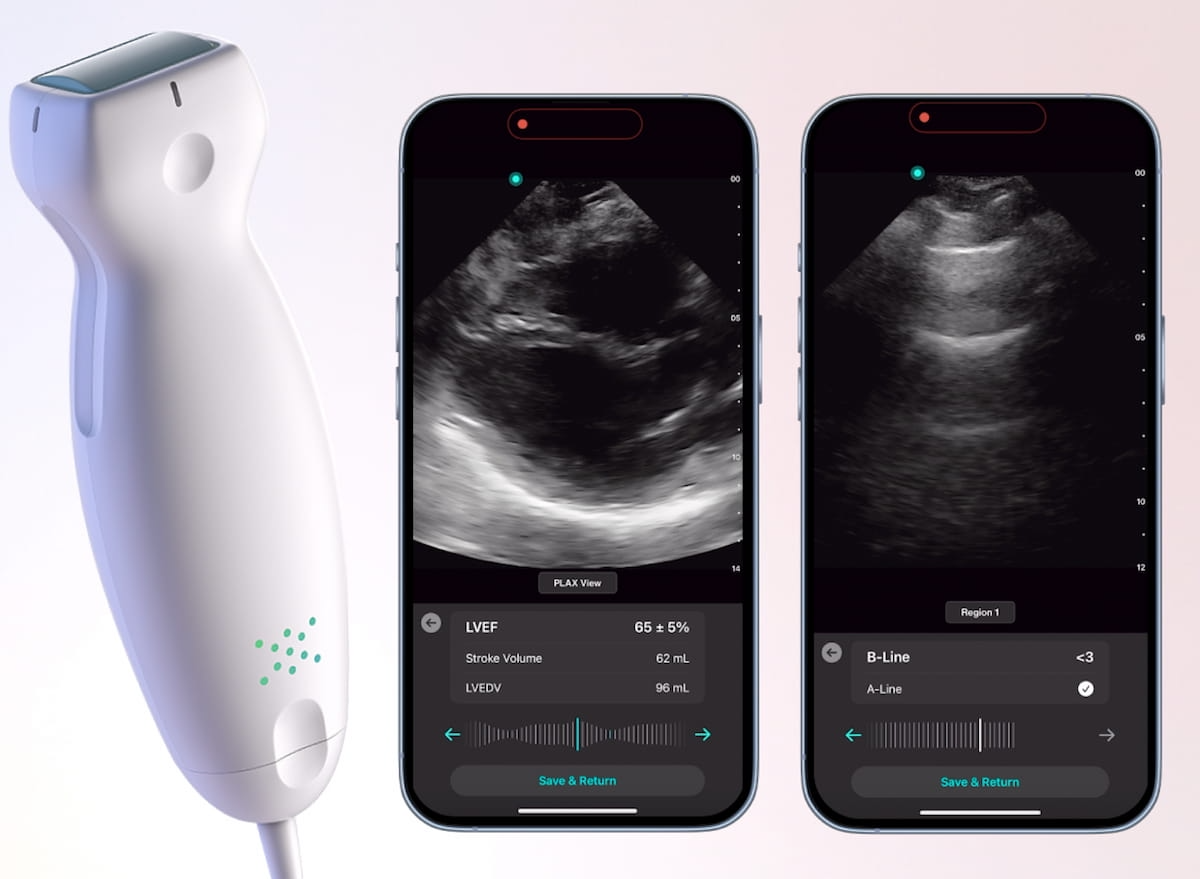FDA Clears Cardiac and Lung AI Applications for Exo Iris Handheld Ultrasound
The artificial intelligence (AI)-powered applications reportedly allow clinicians to diagnose pulmonary edema and measure left ventricle ejection fraction within seconds.
The Food and Drug Administration (FDA) has granted 510(k) clearance for the addition of cardiac and lung artificial intelligence (AI) applications for the Exo Iris handheld ultrasound device.
With rapid identification of B-lines, the lung AI application allows quick detection of pulmonary edema, according to Exo. Whether one is utilizing parasternal long axis (PLAX) or apical four-chamber views, Exo said the cardiac AI application enables clinicians to ascertain stroke volume and measure left ventricle ejection fraction (LVEF) in seconds.
Newly FDA-cleared cardio and lung AI applications for the Exo Iris handheld ultrasound device may facilitate assessments of left ventricle ejection fraction (LVEF) and pulmonary edema in seconds, according to Exo, the manufacturer of the Exo Iris device. (Images courtesy of Exo.)

Emphasizing that the AI applications have been trained over 100,000 ultrasound images, including point-of-care images taken in critical care units and emergency room settings, Exo maintained that the cardiac and lung AI applications provide real-time recognition of key imaging landmarks, even with less than perfect scans.
“Exo’s cardiac and lung AI applications are a game-changer,” said Ted Koutouzis, M.D., a clinical instructor in emergency medicine at Northwestern Medicine in Chicago. “Now I have a fast and reliable clinical tool to help easily distinguish between COPD and CHF patients for precise and timely care.”
Clarius Mobile Health Unveils Anterior Knee Feature for Handheld Ultrasound
April 23rd 2025The T-Mode Anterior Knee feature reportedly offers a combination of automated segmentation and real-time conversion of grayscale ultrasound images into color-coded visuals that bolster understanding for novice ultrasound users.
What is the Best Use of AI in CT Lung Cancer Screening?
April 18th 2025In comparison to radiologist assessment, the use of AI to pre-screen patients with low-dose CT lung cancer screening provided a 12 percent reduction in mean interpretation time with a slight increase in specificity and a slight decrease in the recall rate, according to new research.
The Reading Room: Artificial Intelligence: What RSNA 2020 Offered, and What 2021 Could Bring
December 5th 2020Nina Kottler, M.D., chief medical officer of AI at Radiology Partners, discusses, during RSNA 2020, what new developments the annual meeting provided about these technologies, sessions to access, and what to expect in the coming year.
New bpMRI Study Suggests AI Offers Comparable Results to Radiologists for PCa Detection
April 15th 2025Demonstrating no significant difference with radiologist detection of clinically significant prostate cancer (csPCa), a biparametric MRI-based AI model provided an 88.4 percent sensitivity rate in a recent study.